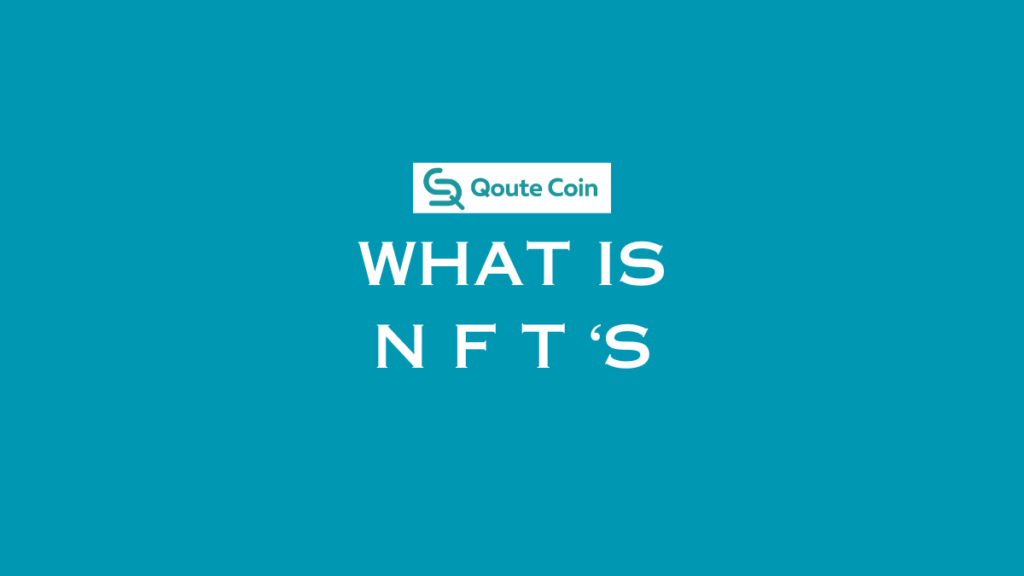
What is NFT
What is NFT: In recent years, a term has been making waves in the world of art, gaming, collectibles, and digital assets – NFT. Non-Fungible Tokens, often abbreviated as NFTs, have taken the internet by storm, capturing the imagination of creators, collectors, and investors alike. But what exactly is an NFT, and why are they gaining so much attention? In this article, we’ll delve deep into the world of NFTs, exploring what they are, how they work, and their impact on various industries.
Table of Contents: What is NFT
Understanding NFTs
What Does “Non-Fungible” Mean?
Before we dive into NFTs, let’s break down the term “non-fungible.” Fungibility is a characteristic of assets, whether digital or physical, that indicates their interchangeability. For example, one ounce of pure gold is interchangeable with another ounce of pure gold – they are fungible. Similarly, one dollar bill is interchangeable with another dollar bill. Non-fungible, on the other hand, means that the asset is unique and cannot be replaced with something else. In essence, non-fungible assets are one-of-a-kind.
Definition of NFT
An NFT, or Non-Fungible Token, is a digital asset that represents ownership or proof of authenticity of a unique item using blockchain technology. Each NFT is distinct, making it impossible to exchange it on a one-to-one basis for another item, unlike cryptocurrencies such as Bitcoin or Ethereum, which are fungible and can be exchanged on a like-for-like basis.
How NFTs Work
Blockchain Technology
The backbone of NFTs is blockchain technology. Blockchains are decentralized digital ledgers that record transactions across a network of computers, ensuring transparency, security, and immutability. NFTs are created and managed through smart contracts on various blockchain platforms, with Ethereum being one of the most popular choices.
Tokenization
To create an NFT, a digital asset, whether it’s an image, video, music, virtual item, or any other unique digital file, is tokenized. Tokenization is the process of converting the asset into a digital token, effectively giving it a unique digital identity. This token is then associated with the asset on the blockchain, making it non-fungible and tamper-proof.
Ownership and Provenance
The ownership and provenance of NFTs are recorded on the blockchain. This means that anyone can verify the originality and ownership history of an NFT, providing a transparent and trustworthy record of its journey.
Digital Scarcity
NFTs introduce the concept of digital scarcity. Since each NFT is unique and its ownership is transparently recorded, creators and collectors can assert the rarity and authenticity of digital items. This concept of scarcity is a fundamental driver of value in the NFT market.
Use Cases for NFTs
1. Digital Art
NFTs have revolutionized the art world, allowing artists to tokenize their digital works and sell them as unique, collectible items. This has provided artists with new avenues for monetizing their creations and has attracted collectors who value the originality of digital art.
2. Gaming
In the gaming industry, NFTs are used to represent in-game assets, such as skins, weapons, and characters. Gamers can buy, sell, and trade these NFTs, giving them true ownership of in-game items. Blockchain-based games have emerged, offering players the opportunity to earn NFTs by playing.
3. Collectibles
NFTs are changing the way people collect digital items. Whether it’s virtual trading cards, rare stickers, or unique music albums, NFTs have become a preferred medium for collectors who appreciate the rarity and authenticity of their digital assets.
4. Music and Entertainment
Musicians and entertainers are leveraging NFTs to release exclusive content, limited edition albums, and concert tickets. This provides artists with direct access to their fans and new revenue streams.
5. Real Estate and Virtual Worlds
Some projects are exploring the use of NFTs for real estate and virtual worlds. NFTs can represent ownership of virtual land or properties, and the concept is being extended to create entirely virtual metaverse environments.
6. Licensing and Intellectual Property
NFTs are also being used for licensing and protecting intellectual property. Creators can tokenize their content and control how it is used and monetized by others, ensuring fair compensation and attribution.
Challenges and Concerns
While NFTs offer exciting possibilities, they also raise several challenges and concerns:
1. Environmental Impact
Many NFTs are created on the Ethereum blockchain, which consumes a significant amount of energy. This has sparked debates about the environmental impact of NFTs and led to the development of more eco-friendly blockchain solutions.
2. Copyright and Plagiarism
NFTs do not inherently solve copyright and plagiarism issues. Stolen or unauthorized digital content can still be tokenized as NFTs, and this has raised concerns about intellectual property protection.
3. Market Speculation
The NFT market has seen significant price volatility and speculative behavior. While this can lead to substantial gains, it can also result in financial losses for inexperienced participants.
4. Lack of Regulation
The NFT market is largely unregulated, leaving it susceptible to fraud and scams. Participants should exercise caution and conduct due diligence when buying or selling NFTs.
The Future of NFTs
NFTs have disrupted traditional concepts of ownership and the value of digital assets. Their future is promising, with potential applications extending to education, healthcare, and more. However, for NFTs to reach their full potential, challenges related to environmental sustainability, copyright protection, and market regulation must be addressed. The NFT space is still evolving, and its long-term impact on various industries will continue to unfold.

Conclusion: What is NFT
Non-Fungible Tokens have reshaped the digital landscape, offering a new paradigm for owning, trading, and valuing unique digital assets. They have enabled artists, creators, and collectors to embrace the digital age with unprecedented opportunities. As the NFT ecosystem continues to expand and mature, it will be fascinating to witness how it further transforms industries and shapes the future of digital ownership and creativity.
TAGS: What is NFT, What is NFT? What is NFT, What is NFT? What is NFT, What is NFT? What is NFT, What is NFT?











